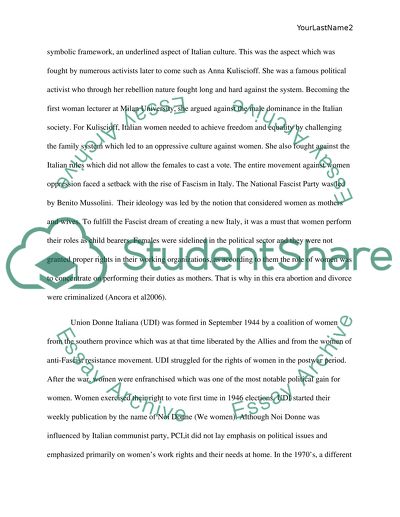Cite this document
(“The Italian Feminist Movement in the 1970s Research Paper”, n.d.)
Retrieved from https://studentshare.org/history/1439242-the-italian-feminist-movement-in-the
Retrieved from https://studentshare.org/history/1439242-the-italian-feminist-movement-in-the
(The Italian Feminist Movement in the 1970s Research Paper)
https://studentshare.org/history/1439242-the-italian-feminist-movement-in-the.
https://studentshare.org/history/1439242-the-italian-feminist-movement-in-the.
“The Italian Feminist Movement in the 1970s Research Paper”, n.d. https://studentshare.org/history/1439242-the-italian-feminist-movement-in-the.


